Master Pool Maintenance: Algae Prevention & Chemistry Tips
June 27th, 2024
June 27th, 2024
Sparkling blue water and a pristine poolside setting—there's nothing quite like it. Yet, lurking beneath that idyllic surface can be an unwelcome guest: algae. For pool owners, maintaining clear water is crucial, not just for aesthetics but also for hygiene. Algae, a microscopic plant that thrives in sunlight and warmth, can turn a backyard paradise into a swampy mess if not controlled.
The allure of algaecides, chemicals specifically designed to prevent or eliminate algae growth, often draws pool enthusiasts seeking a quick fix. With promises of hassle-free, crystal-clear waters, algaecides seem like the perfect solution. However, the reality of incorporating these chemicals into your pool maintenance routine can be more complex than it appears.
My own foray into using algaecides began last summer, when a sudden bloom threatened to turn a family barbecue into a murky disaster. A local pool supplier recommended a popular algaecide, touting its effectiveness. Intrigued, I tried it, but soon realized that understanding the right application, dosage, and timing was crucial. Missing these nuances led to cloudy water, rather than clarity.
In this exploration of algaecides, we’ll unravel the myths and truths about their effectiveness, delve into the science behind their use, and offer practical advice for integrating them into your pool care regimen. Whether you're a seasoned pool owner or a newcomer, understanding these details can be the key to maintaining that perfect backyard oasis.
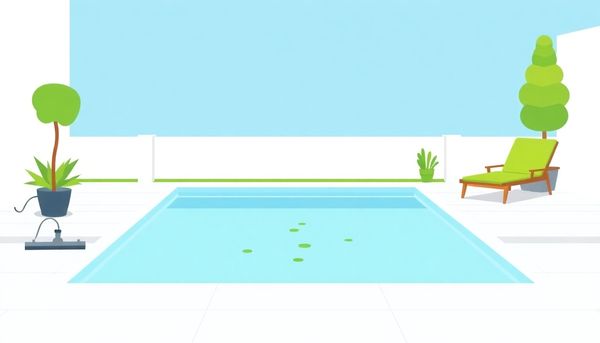
When confronting the common green invader lurking in your pool, it might be tempting to unleash the full force of algaecide, imagining a swift victory over the unwelcome guest. Yet, restraint is key. Using algaecide sparingly is not only a matter of efficacy but also a smart approach to pool maintenance.
Think of algaecide as the sidekick rather than the superhero. Its role is more supportive, keeping algae from taking up residence rather than evicting it outright. In a way, it’s like using bug spray to keep mosquitoes at bay while camping; it’s not about eliminating every buzzing nuisance, but about reducing their numbers enough to enjoy the night under the stars.
Consider the implications of over-relying on algaecide. Each dose contributes to the pool's overall chemical balance. Overuse can lead to an accumulation of metals like copper, particularly if your local water supply is already rich in them. This can cause unsightly stains on your pool surfaces, turning a pristine oasis into a mottled mess.
Instead, focus on maintaining robust pool chemistry with regular testing and adjustments. A diligent routine of chlorination, proper filtration, and occasional shocking will usually suffice to keep algae in check. If and when algaecide is needed, especially with stubborn strains like mustard or black algae, use it judiciously—like a sprinkle of seasoning rather than a heavy pour. Your pool, and your wallet, will thank you.
Not many things compare to the disappointment of finding your pool transformed into a murky, green swamp. But let's face it—life happens. You might have slipped up on maintaining pool chemistry, or maybe an adventurous swim in a natural body of water introduced an unwelcome guest. While it’s tempting to reach for that bottle of algaecide, the real secret weapon lies elsewhere.
First and foremost, mastering pool chemistry can save you from many headaches. Keeping chlorine levels steady at 3 parts per million (ppm) is essential. This ensures bacteria and single-celled algae are oxidized, essentially causing their cell walls to rupture and halting their troublesome growth. But it's not just about chlorine; maintaining balanced pH levels is equally crucial to ensure these chemicals can work their magic effectively.
My neighbor once spent an entire weekend battling algae with algaecide, only to discover that his chlorine levels were wildly inconsistent. A simple adjustment to his pool chemistry, and his pool was clear in no time. It’s these basic chemical checks that often get overlooked, yet they provide a robust first line of defense against algae intrusions.
Remember, your pool is a delicate ecosystem. Regular testing and adjusting of your chemical levels will help keep it clear and inviting. And should you find yourself facing a relentless algae army, keep in mind that a thorough shock treatment is your ally. Algaecides may speed things up, but pristine chemistry is the real hero in maintaining that sparkling oasis.
Battling algae in your pool might feel like an unwelcome chore, but with the right maintenance habits, you can avoid this green menace entirely. Forget the hassle of constant cleaning and think about a proactive approach instead. Maintaining the perfect chemical balance in your pool is crucial. By consistently keeping your chlorine levels between 3-5 ppm and ensuring the pH levels are within the ideal range, you’re already laying down the groundwork to keep algae at bay.
Aside from chemical balance, regular cleaning routines play a huge role in prevention. Take it from a friend who once discovered a small forest of algae flourishing overnight due to a forgotten week of skimming. A simple habit of skimming debris, brushing pool walls, and vacuuming the floor can make the difference between a sparkling oasis and a green swamp.
Another clever tactic is to be mindful of what enters your pool. Swimsuits and pool toys are often the culprits when they carry invisible algae spores from natural water bodies. A quick rinse or wash before they hit the pool can save you from future headaches.
For those living in areas with abundant sunlight or near natural water sources, a copper-free algaecide can offer an extra layer of protection. But remember, it’s most effective when used as a preventive measure rather than a cure. By embracing these practices, you’ll spend less time fighting algae and more time enjoying your pool.
When faced with a stubborn algae situation, it’s tempting to reach for a bottle of algaecide in desperation. But consider this move a last resort, rather than your go-to solution. Let’s explore why: Imagine you're having coffee with a friend who’s spent years managing pool maintenance. They’d tell you that maintaining a balanced pool chemistry is akin to ensuring your car's oil is regularly changed. Just as neglecting oil changes leads to engine trouble, ignoring pool chemistry breeds algae problems.
Chlorine is your pool’s best ally against algae. It works tirelessly, oxidizing algae cells and disrupting their growth. When algae manage to resist these efforts, algaecide can lend a helping hand. However, it’s crucial to use it alongside chlorine or other sanitizers, not as a substitute.
In rare cases, such as when dealing with chlorine-resistant types like mustard or black algae, algaecide may be necessary. Even then, it’s a sidekick, not the hero. The true power lies in maintaining proper chlorine levels, complemented by a robust pool shocking regimen.
Remember, a proactive approach beats reactive measures. Regular testing and adjustments are key to preventing algae from crashing your pool party. So, before reaching for the algaecide, ensure your chlorine game is strong and your pool chemistry is balanced. Save algaecide for those rare instances when you need an extra push, reinforcing an already strong defense against algae.
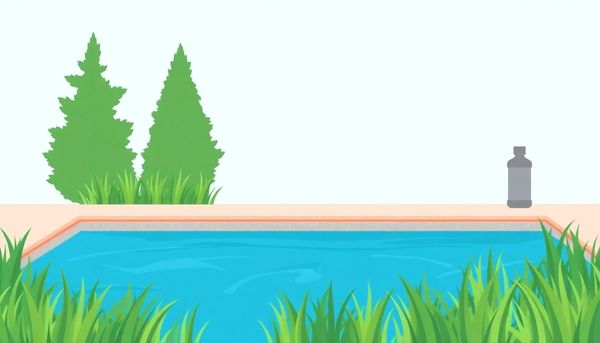
On a bright summer morning, when your pool resembles more of a murky swamp than a sparkling oasis, your first instinct might be to grab the nearest bottle of algaecide. But before you do, consider the superhero of pool maintenance: chlorine. It's not just for keeping your water sanitized; it’s a potent algae assassin. Chlorine attacks algae at a cellular level, breaking down cell walls and effectively cutting off their life supply. This disruption not only halts algae growth but also ensures they can’t reproduce, turning what seems like a persistent problem into a manageable one.
Chlorine works wonders because it oxidizes unwanted intruders, a process akin to a microscopic battle where electrons are exchanged, leading to the ultimate downfall of algae cells. Maintaining a consistent chlorine level of 3 parts per million (ppm) in your pool can stave off most algae invasions before they even start. Balancing this with the right pH levels creates an environment where algae simply can’t thrive.
While it’s tempting to see algaecide as a quick fix, it should be viewed as a sidekick to chlorine rather than the main event. For regular green pool algae, sticking to a robust chlorine regimen, combined with periodic shocking and good pool hygiene, often does the trick. Reserve algaecide for those rare, stubborn algae strains or as a preventive measure when closing your pool for the season. In the battle against algae, let chlorine lead the charge, keeping your water clear and inviting.
Chlorine often emerges as the unsung hero in the battle against pool algae. While reaching for a bottle of algaecide might seem like the natural first step when your pool takes on that dreaded green hue, the truth is that chlorine trumps algaecide when it comes to efficacy. I remember the first time I faced a surprise algae bloom; a pool technician friend of mine chuckled at my knee-jerk reaction to grab the algaecide. “Chlorine’s your MVP,” he assured me, and he was right.
The science behind chlorine’s prowess lies in its ability to oxidize. This might sound like a mere chemical buzzword, but in practice, oxidation means breaking down the cell walls of algae. This rupture halts reproduction and growth, effectively neutralizing the threat. Regularly maintaining a chlorine level of around 3 parts per million (ppm) ensures your pool’s defenses remain robust, keeping algae at bay before it becomes a visible problem.
While algaecides can complement chlorine, especially in cases of resistant strains like mustard or black algae, they should never be the primary solution. Consistent chlorine use, coupled with balanced pool chemistry, acts as a formidable line of defense. In my experience, sticking to this regimen keeps the water sparkling clear and algae-free, leaving the algaecide for those rare, stubborn cases.
Balancing pool chemistry is akin to finding the right harmony in a song; each element must play well together to create the perfect symphony. If you've ever dipped into a pool only to emerge with irritated eyes or itchy skin, you've encountered the consequence of unbalanced water. Ensuring the right levels of chlorine, pH, and alkalinity is not just a task for the fastidious—it's essential for preventing algae blooms.
Think of chlorine as your pool's diligent custodian. It diligently works to keep pesky intruders like algae at bay by oxidizing contaminants. However, too much or too little can upset the delicate equilibrium. Maintaining chlorine levels at around 3 ppm is crucial. Meanwhile, pH levels should nestle between 7.2 and 7.6, ensuring chlorine's efficiency and protecting pool equipment.
Alkalinity acts as the buffer, stabilizing pH swings and lending a helping hand to chlorine. Aim for a range of 80 to 120 ppm to retain that sweet spot. Regular testing, at least once a week, becomes your best friend in this endeavor. A simple home test kit can be your trusty sidekick in this mission.
Imagine recounting a lazy afternoon by the pool without the worry of algae turning your oasis into a murky mess. By keeping your pool chemistry in check, those sun-soaked days remain blissfully clear and inviting. Save the algaecide for rare occasions, and let balanced chemistry be your steadfast guardian.
Pools can be a hub of fun and relaxation, but they can also turn into a breeding ground for algae if not properly maintained. To keep that unwanted visitor at bay, proper sanitation is crucial. A friend of mine once neglected their pool maintenance for just a couple of weeks, and upon returning, found it more swamp than swimming haven. It was a cautionary tale about the importance of routine care.
Begin by ensuring your pool's water chemistry is spot-on. Regular testing and adjusting of chlorine levels, pH, and alkalinity create an environment where algae find it difficult to thrive. Chlorine remains the champion in this battle, efficiently oxidizing algae cells and preventing them from multiplying. Aim to maintain chlorine levels at around 3 parts per million (ppm) for optimal protection.
Beyond chemical balance, cleanliness plays a pivotal role. Scrubbing pool walls and vacuuming the floor regularly dislodges any algae attempting to settle. Moreover, washing swimsuits and toys after returning from natural water bodies removes potential contaminants before they can wreak havoc in your pool.
For those who live near natural water sources or face persistent algae issues, using algaecide as a preventive tool, rather than a cure, might be wise. Remember, prevention is always better than cure. So, by embracing a diligent sanitation routine, you can ensure that the only green in your pool is the envy of your neighbors.
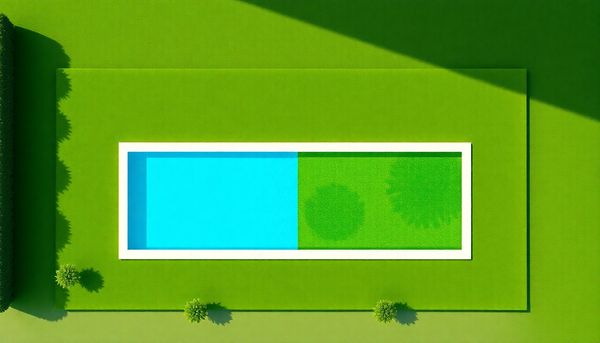
Navigating the waters of pool maintenance sometimes feels like a science experiment gone awry, especially when the shimmering blue fades to murky green. Among the myriad of solutions, copper-based algaecides often catch the eye, promising an effective rescue. However, these metallic concoctions come with potential baggage. Those living in regions with high metal content in their water supply may find copper exacerbating rather than alleviating their pool woes. Oxidation caused by excess copper can result in unsightly stains on pool surfaces, turning your pool from a backyard oasis into a frustrating eyesore.
Given these risks, many pool owners are now turning towards copper-free solutions. These algaecides leverage alternative compounds that tackle algae without the metallic side effects. For instance, using polymer-based algaecides can be a safer choice, especially for those who want to preserve the aesthetics of their pool. These products can effectively hinder algae growth while minimizing the risk of staining.
Personally, after a particularly aggravating summer of battling stubborn algae and dealing with unexpected pool discoloration, I made the switch to a copper-free algaecide. The results were both immediate and rewarding—clearer water and peace of mind. So, if you're eyeing that algaecide aisle, consider choosing a copper-free option. Your pool and wallet might just thank you for it, offering an algae-free experience without the metallic aftermath.
To keep algae at bay, the secret lies not in a bottle of algaecide, but in consistent pool maintenance practices. Picture this: a sunny Saturday morning, armed with your trusty pool testing kit, you take a moment to ensure your pool's chemistry is just right. This ritual is your first line of defense against the green invaders. Keeping chlorine levels between 1 to 3 parts per million, along with balanced pH, ensures an inhospitable environment for algae.
Vigilance doesn’t stop there. Regularly scrubbing the pool walls and floor prevents algae spores from finding a cozy nook to settle. Remember, even the pool’s filtration system deserves attention. A clean and efficient filter not only keeps water clear but also prevents the stagnation that algae love. Consider it the unsung hero of your pool's health.
If you've ever returned from a day at the beach only to jump back into your pool, you know how easily contaminants can hitch a ride. Washing swimsuits and toys promptly after ocean or river outings is crucial. This habit minimizes unwanted guests sneaking in and setting up shop in your pool.
In regions graced with abundant sunshine, algae blooms can be a persistent threat. Here, some pool owners opt to use algaecide as a preventive measure rather than a cure, applying it in anticipation of those long, sunny spells. Think of it as an extra layer of security rather than the main line of defense.
A serene morning turns into chaos when you notice unsightly metal stains marring your pool's pristine surface. These stains, often a result of metal oxidation, can emerge unexpectedly and stubbornly resist removal. In many cases, the culprit is an excess of metals like iron or copper in your pool water. When algaecides are introduced, especially those containing copper, the risk of staining increases significantly.
The trouble begins when metal-rich water, perhaps sourced from a well or an area with naturally high metal content, fills your pool. Under these conditions, the addition of copper-based algaecides can accelerate oxidation, leading to unattractive blue-green or rusty stains on your pool liners and surfaces. This isn't merely an aesthetic issue; metal stains can also be tough to eliminate, demanding time, effort, and sometimes costly treatments.
To steer clear of this headache, consider using algaecides that are specifically labeled as copper-free. These alternatives can help maintain your pool’s sparkle without inviting the woes of metal staining. Additionally, regularly monitoring your water’s metal levels with test kits can provide early warnings, allowing you to adjust your chemical regimen accordingly.
In my own experience, a simple switch to a copper-free algaecide and periodic metal testing transformed my pool maintenance routine, sparing me from unsightly stains and the frustration that accompanies them. With a few proactive steps, keeping your pool both algae-free and stain-free becomes a much simpler task.
When it comes to tackling algae in pools, chlorine often emerges as the unsung hero. Not everyone realizes that this everyday pool sanitizer is more adept at eradicating algae than the more specialized algaecides. My neighbor once had a pool that seemed perpetually tinged with green despite using algaecide. After some convincing, they switched to a rigorous chlorine routine. The change was remarkable—the water regained its clarity and sparkle within days.
Chlorine works through a process called oxidation, which is essentially a microscopic battle. It exchanges electrons with bacteria and algae, rupturing the cell walls and disrupting their ability to thrive and multiply. This breakdown is crucial because, without intact cell walls, algae can't retain nutrients or continue their growth cycle.
To keep algae at bay, maintaining proper chlorine levels is imperative. Aim for around 3 ppm for chlorine, ensuring the pH levels are also well-balanced. If you notice your pool turning green, a shock treatment, which involves temporarily raising chlorine levels, can be particularly effective. This method not only cleans up any existing trouble but also prevents future blooms.
Algaecide might still have its place, especially for stubborn strains like mustard or black algae. However, its role is more of a sidekick to chlorine. Stick to chlorine as your primary defense, and your pool should remain an inviting oasis, free from the clutches of unwanted algae.
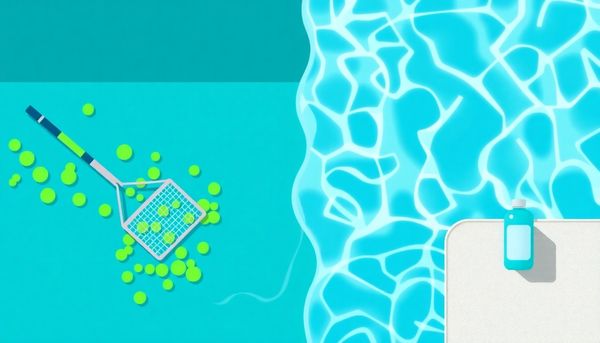
The quiet hero in the battle against pool algae is not the algaecide you might instinctively reach for, but rather, the consistent maintenance of your pool's chemistry. Think of it like tending a garden. Just as plants thrive with the right balance of sunlight, water, and nutrients, your pool remains clear and inviting with the proper chemical levels. The secret lies in the harmony of elements like chlorine, pH, and alkalinity.
Chlorine stands as your primary defender, effectively oxidizing pesky algae and bacteria at a microscopic level. By maintaining a chlorine level of around 3 ppm, you disrupt the cellular integrity of algae, halting their growth before they can flourish. Simultaneously, keeping your pool's pH between 7.2 and 7.6 ensures chlorine’s effectiveness, while alkalinity levels act as a buffer, preventing dramatic chemical swings.
Every week, a routine check of these levels can save you from a green pool nightmare. For those of us who occasionally let pool maintenance slip—who hasn’t been there?—a swift shock treatment can reset your pool’s chemical balance. This involves a concentrated blast of chlorine that decimates existing algae and safeguards against new growth.
Remember, even if a rogue swimsuit introduces algae, maintaining optimum chemistry provides a bulwark. Regular monitoring transforms pool upkeep from a daunting task to a manageable routine, creating a shimmering oasis ready for that next perfect summer splash.
A clear pool often mirrors the balance within its water, and maintaining this balance is at the heart of preventing algae invasions. It's akin to nurturing a small ecosystem where all components must work in harmony. The key lies in regularly monitoring and adjusting your pool’s chemical levels, ensuring they stay within the optimal range. When I first became a pool owner, I'd spend lazy Sunday afternoons testing the water, tweaking the chemicals to ensure everything was just right. A little effort goes a long way in keeping that sparkle in your pool water.
Vigilance with your sanitizer levels—whether that's chlorine, bromine, or biguanide—is crucial. Chlorine, in particular, stands out as a champion against algae, thanks to its oxidizing power, which disrupts the integrity of algae cells. Maintaining chlorine levels around 3 parts per million (ppm) proves most effective. However, pH balance is equally important. An unbalanced pH not only reduces the effectiveness of sanitizers but also invites unwanted growth. My neighbor once overlooked this, thinking his regular chlorine additions were enough, only to find a green surprise awaiting him after a week of neglect.
Balancing alkalinity and calcium hardness can further fortify your defense against algae. These elements work to stabilize pH and prevent scaling, respectively. By embracing a routine of simple checks and balances, you’re not just staving off algae; you’re ensuring your pool remains a refreshing oasis, free from unwanted invaders.
Chlorine may not have the allure of a high-tech solution, but when it comes to pool maintenance, it's the unsung hero in the battle against algae. Reflecting on a sweltering summer a couple of years ago, I remember my own pool transforming into a leafy green mess seemingly overnight. It was chlorine that came to the rescue, proving its might as the ultimate algae adversary.
Understanding how chlorine combats algae can turn the tide in your favor. This process involves more than just dumping chemicals into the water. Chlorine works by oxidizing algae cells, essentially breaking down their cell walls and causing them to lose vital nutrients, which halts their growth. Regularly maintaining a chlorine level of around 3 parts per million (ppm) in your pool ensures that any algae spores entering the water are swiftly dealt with before they can establish themselves.
Don't underestimate the importance of pool shocking. This involves adding a large amount of chlorine to your water, which is particularly effective after heavy rain or when opening your pool for the season. It's like giving your pool an immunity boost, ensuring that even the most resilient algae don't stand a chance. And remember, a balanced pH level is essential for chlorine to do its job effectively, so keep an eye on those numbers.
Chlorine might not have the glam of algaecides, but in the world of pool maintenance, it’s the steadfast soldier you can rely on. Embrace it, and algae will have a hard time crashing your next pool party.
Every pool owner knows the frustration of battling against unwelcome invaders—the dreaded algae bloom. Yet, even before algae become a problem, another formidable foe lurks: external contaminants. These sneaky nuisances often hitch a ride into your pool through seemingly innocent means, like a swimsuit fresh from a swim at the lake or a child's favorite inflatable toy that played in murky waters.
To fortify your pool against these interlopers, vigilance in maintaining proper pool chemistry is paramount. Nevertheless, preemptive measures can significantly reduce the likelihood of algae and other contaminants establishing a foothold. After enjoying natural bodies of water, it is essential to thoroughly wash swimsuits and sanitize toys. A simple wash in the laundry for clothing and a bleach solution for toys can serve as a formidable barrier against transferring unwanted guests into your pool.
Moreover, consider the strategic use of algaecide—especially if your home is near a natural water source. A preventive dose can act as a shield, especially on those gloriously bright days when the sun encourages algae growth. And as the seasons change, don’t forget the importance of adding algaecide when closing your pool for the winter months. This step ensures your pool remains clear and inviting when the cover is finally pulled away in the spring. By taking these actions, you're not just maintaining a pool—you're nurturing a sanctuary.
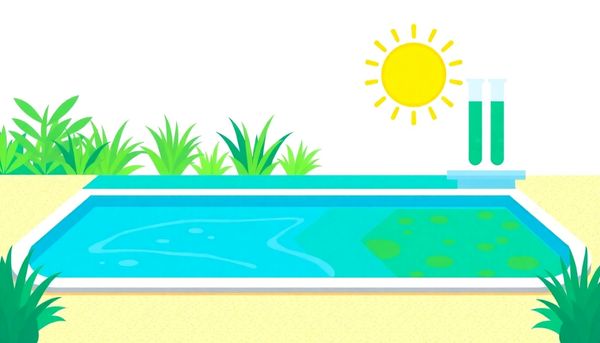
Encountering a green pool can feel like waking up to an unexpected challenge. Before resorting to algaecide, let’s talk about the power of pool shock, a strategy that transforms murky nightmares back into sparkling dreams. This isn't about throwing chemicals in willy-nilly; it's a targeted approach to reclaim your backyard oasis.
Pool shock works by dramatically increasing the chlorine level for a short period, a process known as superchlorination. This surge overwhelms the algae and bacteria, destroying their cell structures and effectively halting their spread. But timing and technique are everything here. Start by calculating the volume of your pool to determine the correct amount of shock needed. Too little and the algae will laugh at your efforts; too much, and you risk irritation to swimmers and damage to your pool’s surface.
Once ready, sprinkle the shock evenly across the pool’s surface, ideally in the evening. The absence of the sun prevents the chlorine from burning off too quickly, ensuring maximum effectiveness. Watch as your pool transforms overnight from a swamp-like mess back to blue serenity. But remember, after shocking, test your water balance. High chlorine levels can take a few days to normalize, so patience is key before diving back in.
For those dealing with particularly stubborn algae, like mustard or black algae, a second shock treatment may be necessary. Alongside algae brushes and regular circulation, shocking remains your best ally in the battle against pool algae.
Waking up to a green, murky pool can feel like a betrayal by what was once your oasis. But before you reach for that algaecide, consider the hero right under your nose: chlorine. Surprisingly, this everyday pool chemical works wonders against algae, efficiently more so than algaecides in many scenarios.
Chlorine's power lies in its oxidizing properties. When added to pool water, chlorine disrupts the cellular functions of algae, rupturing their cell walls and halting growth and reproduction. Maintaining chlorine levels at around 3 parts per million (ppm) is crucial for consistent defense. This might sound like you need a degree in chemistry, but it's as simple as regular testing and adjustment—a small price for crystal-clear water.
A personal tale of mine involves a particularly stubborn algae bloom that threatened to spoil a family barbecue. Armed with a tester kit and some chlorine, I embarked on what felt like a chemistry experiment. After adjusting the levels and giving the pool a good shock treatment, the algae was no match.
For those occasional invaders hitching a ride from natural water bodies or swimsuits, regular shocking alongside routine chlorine maintenance can tackle the problem head-on. Remember, while algaecides can serve as a preventive measure, chlorine remains your reliable ally in keeping your pool pristine and welcoming. So, the next time you notice an unwelcome green tint, channel your inner scientist and let chlorine work its magic.
Maintaining a pristine pool isn't just about dealing with algae when it appears—it's about stopping it before it has a chance to thrive. The secret lies in implementing preventive pool practices that keep your pool a sparkling oasis all season long. Start by establishing a routine of consistent pool maintenance. Testing your water regularly—at least once a week—is crucial. Keep an eye on your chlorine levels, ensuring they stay within the 3 ppm to 5 ppm range. Balanced pH levels are equally important, as incorrect pH can render chlorine ineffective.
Beyond chemistry, the physical condition of your pool contributes significantly to preventing algae. Scrub the walls and floor regularly to remove potential biofilm, a breeding ground for algae. It's akin to keeping your garden free from weeds—consistent care makes a world of difference. Also, be diligent with your filtration system. Running your pool filter for an adequate number of hours each day ensures debris is removed, reducing algae's food source.
Consider the impact of what's introduced into your pool. After a day at the beach or lake, thoroughly wash swimsuits and sanitize toys before they return to the pool. This simple habit can prevent foreign algae spores from sneaking into your pool water. In regions prone to heavy sunlight, a preventive dose of algaecide can act as an extra buffer against algae blooms. By weaving these practices into your regular maintenance routine, you’ll not only manage existing algae efficiently but also significantly reduce the likelihood of future invasions.
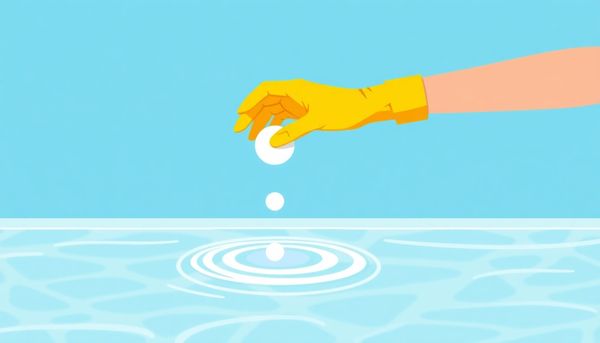
This article provided insights into maintaining your pool. Start your pool care journey today!
Want to become a pool maintenance expert? Our free Pool School course covers everything you need to know about pool care. From basic maintenance to advanced troubleshooting, you'll learn how to:
Join over 10,000 pool owners who have already transformed their pool care routine. Get started with our free Pool School course today!